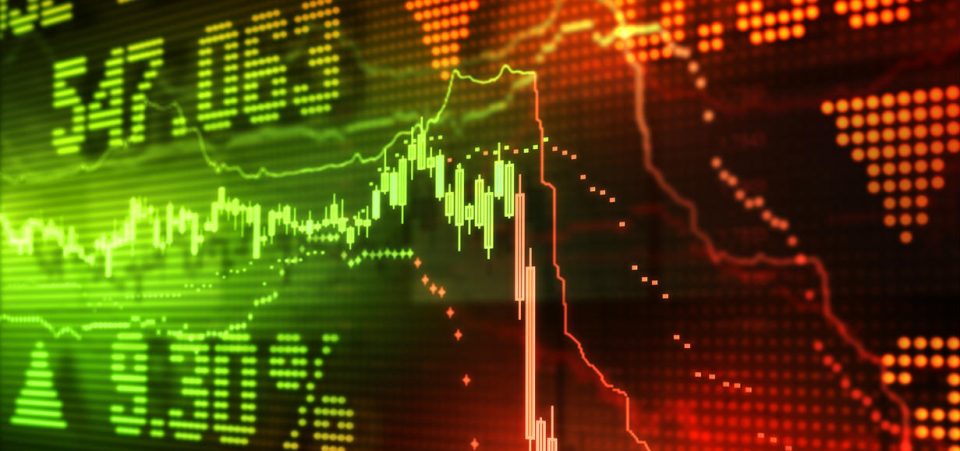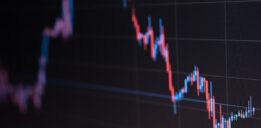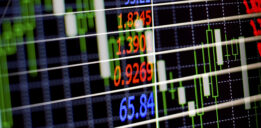3 Experts Predict Stock Market Collapse in 2017
Stocks may be at record levels and the Federal Reserve is set to raise rates (a nod that the U.S. economy is strong and heading in the right direction) but not everyone is convinced. In fact, three investment gurus—Marc Faber, George Soros, and Jim Rogers—are predicting that the stock market will collapse in 2017.
The next stock market collapse is hardly on the radar of the cheering Dow Jones 21,000 crowd on Wall Street, but those who have been around to see a number of business cycles (and have made millions of dollars from both expansions and contractions) are predicting the next stock market crash to happen in 2017.
Are Faber, Soros, and Rogers even close to the mark in predicting a stock market crash in 2017, or are they just contrarian investors making the same tired old claims?
2016 was a good year to be a contrarian investor, at least according to one measure. Contrarian investors realized returns in excess of 30% in 2016; that’s nearly triple the S&P 500’s rise of 9.8%. The strong contrarian gains come during a year marked by uncertainty: stocks plunged in early 2016 on fears of a global slowdown, in June, Britain voted to leave the European Union (EU), and Donald Trump surprised many by winning the White House.
While most equities were on a roller coaster ride in 2016, commodity prices experienced a solid rebound. Had investors purchased the 10 worst-performing stocks from 2015 and shorted the 10 best performers, they would have done very well. (Source: “2016 Was a Very Good Year for Stock Market Contrarians,” The Wall Street Journal, December 19, 2016.)
BHP Billiton Limited (ADR) (NYSE:BHP) fell 35% in 2015 but returned 45.77%. Royal Dutch Shell Plc (LON:RDSA) advanced 45%, while Wal-Mart Stores Inc (NYSE:WMT) fell 29% in 2015 but increased 17.5% in 2016.
| Company Name | Loss in 2015 | Gains in 2016 |
| BHP Billiton Limited (ADR) (NYSE:BHP) | -35% | +45.7% |
| Banco Santander SA (LON:BNC) | -35% | +24.4% |
| Union Pacific Corporation (NYSE:UNP) | -34% | +38.3% |
| Yahoo! Inc. (NASDAQ:YHOO) | -34% | +20.4% |
| Rio Tinto plc (ADR) (NYSE:RIO) | -34% | +43.5% |
| QUALCOMM, Inc. (NASDAQ:QCOM) | -33% | +36.6% |
| ConocoPhillips (NYSE:COP) | -32% | +10.8% |
| Royal Dutch Shell Plc (LON:RDSA) | -31% | +45.0% |
| Twenty-First Century Fox Inc (NASDAQ:FOXA) | -29% | +6.3% |
| Wal-Mart Stores Inc (NYSE:WMT) | -29% | +17.6% |
Precious metals also had a good run in 2016. In 2015, gold prices fell 10% but increased nine percent in 2016. Silver prices also rebounded, advancing 15.7% after falling 12% in 2015.
Will 2017 be a great year for contrarian investors bullish on precious metals and bearish on oil and stocks? George Soros, Marc Faber, and Jim Rogers think so.
George Soros Has a Negative View of Stocks in 2017
Hungarian-born George Soros, the founder of the $4.5 billion Soros Fund Management LLC, is the 23rd wealthiest person in the world. In 1969, the hedge fund guru started the Quantum Group of Funds with Jim Rogers, another famous contrarian investor.
Had you trusted Soros with $1,000 in 1969, your initial investment would have been worth $4.0 million in 2000. Over that time, his fund achieved a cumulative annual return of 32%.
Soros also famously made $1.8 billion in 1992 when, in the week prior to Black Wednesday (September 16, 1992), he shorted the British pound and purchased German marks. This earned him the title “The Man Who Broke the Bank of England.”
Soros isn’t without his missteps. His fund lost big betting on tech stocks before the dotcom bubble burst and took a big stake in Lehman Brothers Holdings, Inc. just before it failed in 2008.
Soros also lost close to $1.0 billion after making some bearish bets following Donald Trump’s U.S. election win in November. During the fourth quarter of 2016, Soros placed puts and call options to sell on two exchange-traded funds that track the broader market. If you’ll recall, the markets went on to rally to record highs. That’s not a rally that many can claim to have predicted. (Source: “Form 13F Information Table,” U.S. Securities and Exchange Commission, last accessed March 9, 2017.)
At the same time, Soros held more than $72.6 million worth of call or put options to buy on 3.125 million shares of the SPDR Financial Select Sector ETF, which holds large-cap banks and Berkshire Hathaway Inc (NYSE:BRK.B). The fund is up more than 27% since before the U.S. presidential election.
Despite his love of American banks, Soros does not believe that U.S. stocks can sustain the Trump rally. At the World Economic Forum’s annual meeting in January, Soros said, “Right now uncertainty is at a peak. And, actually, uncertainty is the enemy of long-term investment. So I don’t think the markets are going to do very well.” (Source: “Soros Says Markets to Slump With Trump, EU Faces Disintegration,” Bloomberg, January 19, 2017.)
One reason why U.S. stocks are expected to crash is that Donald Trump will, according to Soros, fail as president. The stock market is only being supported by hope that Trump’s policies will succeed, not by strong fundamentals.
To that end, Soros suggests that Trump’s position on trade is a prime example of a contradiction that cannot succeed. Trump’s call for stimulus to boost the U.S. economy will come up against a wall when he starts a trade war with China, which will have an adverse effect and actually be a drag on economic growth.
Moreover, Soros maintains that because President Trump is unpredictable and unprepared, the post-election rally will start to turn and there will be a U.S stock market correction in 2017.
What is George Soros’s U.S economic outlook for 2017? Soros maintains that Trump’s cabinet is made up of “incompetent extremists and retired generals.” While he believes the U.S. will survive a Trump presidency, he does not see 2017 as being a great year for stocks. In fact, 2017 could be the year that investors realize there is a disconnect between the stock market and the economy, and that stocks start the Great Contraction.
Marc Faber Sees an Avalanche of Selling in 2017
The next stock market collapse prediction comes from Marc Faber. Marc Faber’s stock market prediction for 2017 is a little more dire than George Soros’s. Faber holds that U.S. stocks are overvalued and vulnerable to a sell-off. No one knows when the markets will peak and when the selling will start, but when it does, it’ll snowball and turn into an avalanche. (Source: “When selling starts in markets, it’ll trigger an ‘avalanche’, Marc Faber says,” CNBC, February 26, 2017.)
Should you believe what Faber predicts for U.S. stocks in 2017? He’s one of the world’s most famous contrarian investors so, if you’re a perma-bull and think President Trump will “Make America Great Again,” you may want to take what Faber says with a boulder of salt. After all, his motto is, “Follow the course opposite to custom and you will almost always be right.”
Dr. Faber, better known as “Dr. Doom,” was born in Switzerland and educated in Geneva and Zurich. He graduated at the age of 24 with a Ph.D. in Economics from the University of Zurich.
Today, Faber is well known as the publisher of the widely read financial The Gloom, Boom & Doom Report, which highlights investment opportunities around the globe. What is Faber saying investors should do with their money in 2017? Faber says the U.S. stock market rally is overextended and vulnerable to a sell-off. He argues that investors should readjust their portfolios and go long on precious metals like gold, platinum, and silver, and consider investing in overseas markets.
There’s time to make these adjustments. He does not believe that stocks will sell off in the near future, but they will in the face of nosebleed stock valuations, a strong U.S. dollar, and massive debt.
Faber’s take on U.S. stocks is interesting because he supported Donald Trump, whereas George Soros is an avid supporter of Hillary Clinton. Even Faber doesn’t think Donald Trump can “Make America Great Again,” but Faber doesn’t blame the Trump administration for this.
“Trump, unlike Mr. [Ronald] Reagan, is facing huge, huge headwinds — including a debt to GDP that is gigantic, as it is in other countries,” said Faber.
To the first point already mentioned, stock valuations are indeed high. The S&P 500 has advanced more than 20% over the last 12 months, with half of those gains coming since Donald Trump won the November 2016 election. At the same time, corporate earnings estimates for 2017 have fallen by one percent.
Moreover, the U.S. dollar is strong, but only because the U.S. economy looks strong compared to other countries. Regardless, the United States continues to attract a lot of foreign capital, which helps prop up the dollar and stock prices. But this could easily reverse.
“I believe the time will come when the weakness of the euro becomes uncomfortable for the Europeans, specifically the Germans, and then there will be a reverse,” said Faber. “And the dollar will go down, and the money that flowed into U.S. assets will flow out of U.S. assets, and so the market is more likely to go down.” (Source: “Marc ‘Dr. Doom’ Faber says the ‘very complacent’ market could go down for these 3 reasons,” CNBC, March 2, 2017.)
The fact remains, the U.S. economy remains fragile. In 2016, U.S. gross domestic product (GDP) growth was just 1.6%; the worst performance since 2011. Assuming Donald Trump’s fiscal stimulus plans work, the U.S. GDP forecast for 2017 is 2.4% and 2.8% in 2018. But those are big “ifs.” At least, that’s according to the OECD (Organisation for Economic Co-operation and Development).
The Paris think-tank also predicts global GDP growth will advance to 3.3% in 2016 (from 3.0%) and accelerate to 3.6% in 2018. But, these numbers could be in jeopardy if Donald Trump’s trade tariffs undermine global growth. (Source: “Modest pick-up in global growth but risks and vulnerabilities could derail recovery,” Organisation for Economic Co-operation and Development, March 7, 2017.)
This leads to the third point: a huge debt-to-GDP ratio. A debt-to-GDP ratio of 1.0 or 100% means that a country’s debt is equal to its GDP and is used to determine how healthy an economy is.
President Trump inherited a national debt of almost $20.0 trillion and a deficit of around $600.0 million. The U.S. has a debt-to-GDP ratio of around 106.0%. Japan’s debt-to-GDP ratio is around 232%, Portugal’s 142%, France is at 116%, and the United Kingdom is at 107%.
These headwinds are too great for even Donald Trump to overcome. And there are too many to overcome. And, perhaps because there are so many challenges facing the Trump administration, investors will not see the avalanche coming.
Stocks will, in an unassuming way, start to sell off. Investors will see stocks retracing from record highs, for no apparent reason, just like they did in March 2000, and it will trigger even more selling. This will turn into an avalanche. And investors will “endure a gut-wrenching drop that would rival the greatest crashes in stock market history.” (Source: “Marc Faber: Investors are on the Titanic but there’s still a few days to travel,” CNBC, June 29, 2016.)
What investments is Marc Faber bullish on? In addition to bonds and real estate, Faber is bullish on precious metals like gold and silver. Faber advises his clients to invest 25% of their portfolios in precious metals. Right now, Faber holds that commodities like gold, platinum, silver, and copper could return solid profits in 2017. (Source: “Marc Faber: Gold Should Comprise 25 Percent of Your Investment Portfolio,” Newsmax, July 26, 2016.)
Thanks to a decent outlook for global GDP growth, Faber points to other countries that investors should consider—in particular, Mexico, Brazil, and Asia—where equities are up 10% or more in the first few months of 2017. China is also an attractive bet.
Moreover, in the face of possible trade tariffs imposed by President Trump, these same countries could decide that the U.S. is not a reliable trade partner and develop new trade deals with each other.
U.S. stocks may be in a bubble and the U.S. economy may be struggling, but that doesn’t mean investors can’t profit from an avalanche.
Jim Rogers Says Trade War Will Lead to Stock Market Crash
Jim Rogers is one of the most successful investors in the world. Now worth billions of dollars, he graduated from Yale in 1964 and earned a degree in Philosophy, Politics, and Economics from Oxford in 1966 and co-founded the Quantum Fund with George Soros. After a successful run, he retired at 37 and traveled the world. Rogers is also the author of a number of books, including Investment Biker: On The Road With Jim Rogers and A Bull in China: Investing Profitably in the World’s Greatest Market.
What is Jim Roger’s take on U.S. stocks and the U.S. economy? He’s taken a couple contrarian views actually.
Buy Russia
First, stocks have rallied to record levels since Trump was elected president in November, but this has made many stocks expensive.
At the same time, the investing guru says Trump’s proposed tax cuts, infrastructure spending, and corporate tax holiday should keep the U.S. economy in a healthy state and push equities even higher. In the wake of the Trump presidency, the best place to look for growth is in undervalued markets, like Russia. (Source: “Investing legend Jim Rogers: ‘Forget China, buy Russia’,” CNBC, January 9, 2017.)
Rogers is bullish on Russia because of the blossoming friendship between Trump and Putin. Obama, on the other hand, did little to foster anything but icy relations with Russia. The improved relationship should lead to an end in NATO sanctions against Russia, which were imposed after Russia annexed Crimea from the Ukraine.
Why trust Jim Rogers’ foresight into the profitability of investing in a country like Russia? Rogers was one of the only people to accurately predict two of the biggest political surprises of 2016: Brexit and Donald Trump. If Rogers is bullish on Russia, there’s a good reason. And investors shouldn’t discount it simply because of history.
Moreover, it is expected that Russia’s GDP growth could move from -0.2% in 2016 to 0.5% in 2017. Russia is the 12th-largest economy ($1.3 trillion) in the world, has vast natural resources, the world’s largest petroleum producer, and isn’t mired in debt, despite being hit with a recession, a collapse in oil prices, and international sanctions.
Trade War Will Lead to Worst Economic Problems of Our Lifetimes
If Russia is a good bet for 2017, U.S. stocks will be a bad bet.
“Get prepared because we are going to have the worst economic problems we have had in your lifetime or my lifetime and when that happens a lot of people are going to disappear,” said Rogers. He also said that people should start to “get very worried.” (Source: “Interview with Jim Rogers: Macro Outlook in the Trump Era,” MACRO Voices, February 9, 2017.)
The turning point for the next financial crisis could be a trade war between the U.S. and China, Mexico, Japan, Korea, and a number of other countries, which would lead to disaster.
On his first day in office, Trump said he would impose 45% tariffs against China. If Trump does that, “it’s all over.” And Rogers has history to back his claims up: “Trade wars always lead to problems, often to disaster, sometimes even to real war, a shooting war. So I don’t know, I’m not sure Mr. Trump knows. He said so many things and many of the things are contradictory.”
Rogers observes that, should President Trump get the trade war he wants, investors should sell everything. That means U.S. stocks.
“History has shown that no one has won a trade war and very few people learned the lessons of history. They ignore them because people think they are more powerful and smarter than people in the past.” (Source: “Investing legend Jim Rogers says dump stocks if Trump launches trade war,” MarketWatch, January 23, 2017.)
A trade war with China would have a ripple effect. China could reduce its $1.12 trillion of U.S. debt holdings and could also retaliate with its own tariffs on U.S. imports, which would hurt industries such as agriculture.
In 2016, the U.S. had agricultural surplus trade with Greater China, exporting $26.0 billion while importing just $4.0 billion. Importing less from the U.S. would strengthen the agricultural industries in China and Russia.
As a result, Rogers is bullish on certain sectors in China, “including those that improve the environment and peoples lives.” No matter what happens in the world, parts of the Chinese economy are going to do extremely well. (Source: “Investing legend Jim Rogers: ‘Forget China, buy Russia’,” CNBC, op cit.)
Rogers has lived in Singapore for nine years, and said, “I don’t think many people, if any in Washington, understand what’s happening [in Asia]. … They don’t understand that Japan is in decline. They don’t understand that North and South Korea will be merging soon. They don’t understand the rise of China.” And as the United States’ role in the region is reduced, as Trump has asserted, China’s influence will rise.
Not surprisingly, Rogers is also bullish on Asia over the next 10 to 20 years. “If you look at the largest creditor nations in the world, they’re all in Asia: Hong Kong, Taiwan, Korea, Japan, Singapore, even Russia. This is where the assets are. This is where the demographics are positive. This is where the energy is.”
Jim Rogers does not necessarily believe that there is a stock market bubble in 2017, but a trade war with China would result in U.S. stocks cratering. That said, he is bullish on is the U.S. dollar, which, he believes, will continue to rise into 2018. Trump’s proposed corporate tax holiday alone, Rogers maintains, is enough to ensure the U.S. dollar remains strong.
The grim outlook for the U.S. economy and U.S. stocks shouldn’t scare investors in 2017. Even if there is a trade war and U.S. stocks are demolished.
“The Chinese have a word that opportunity and disaster are the same so when there is a catastrophe, it is also a huge opportunity,” Rogers said.






